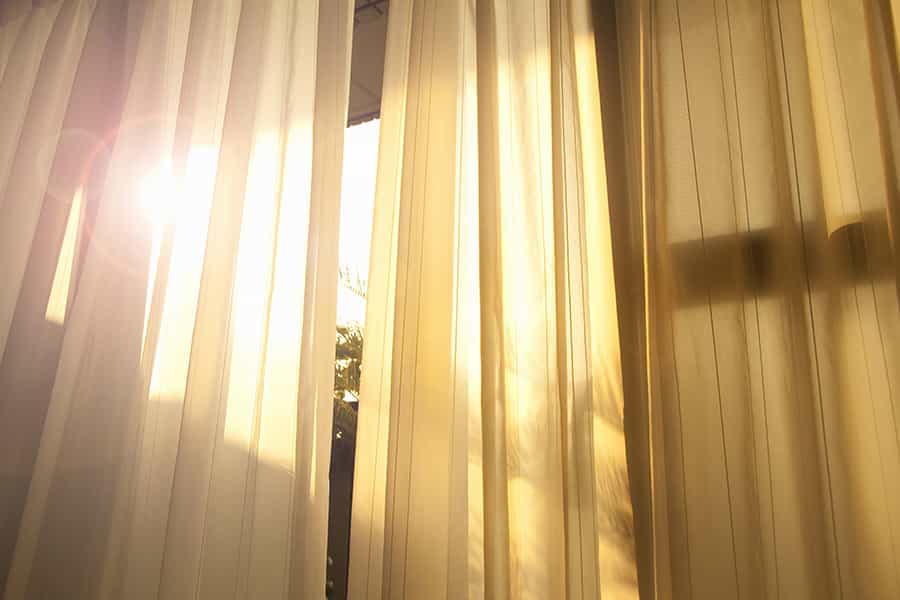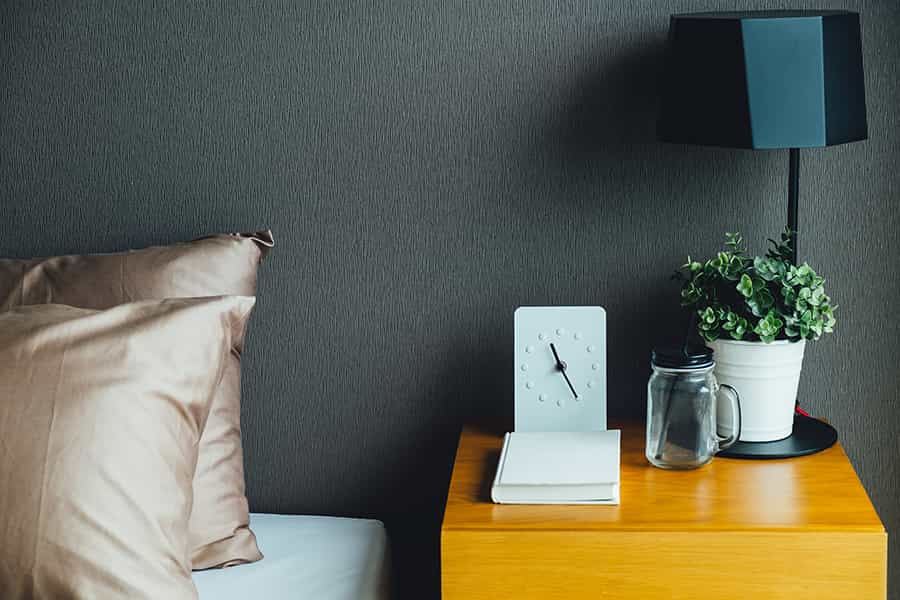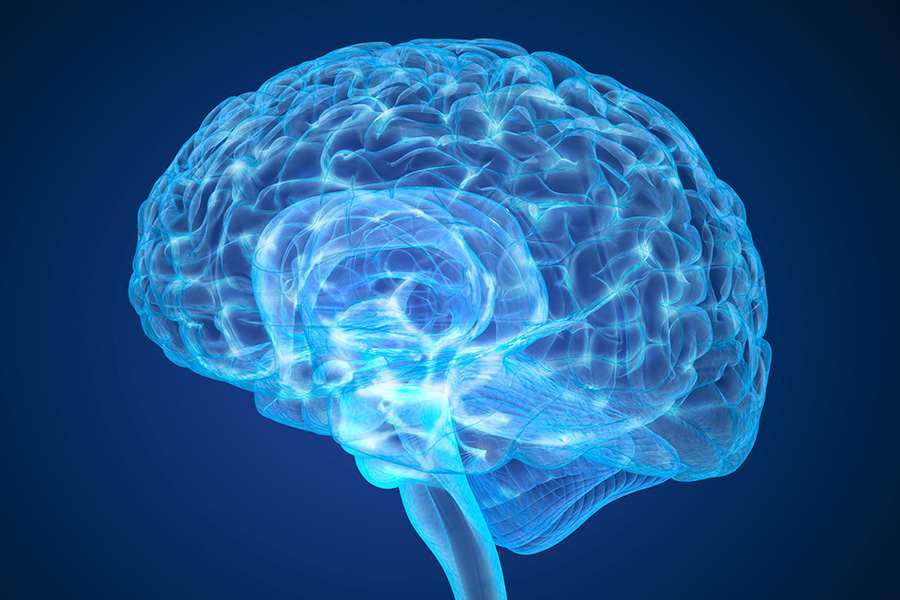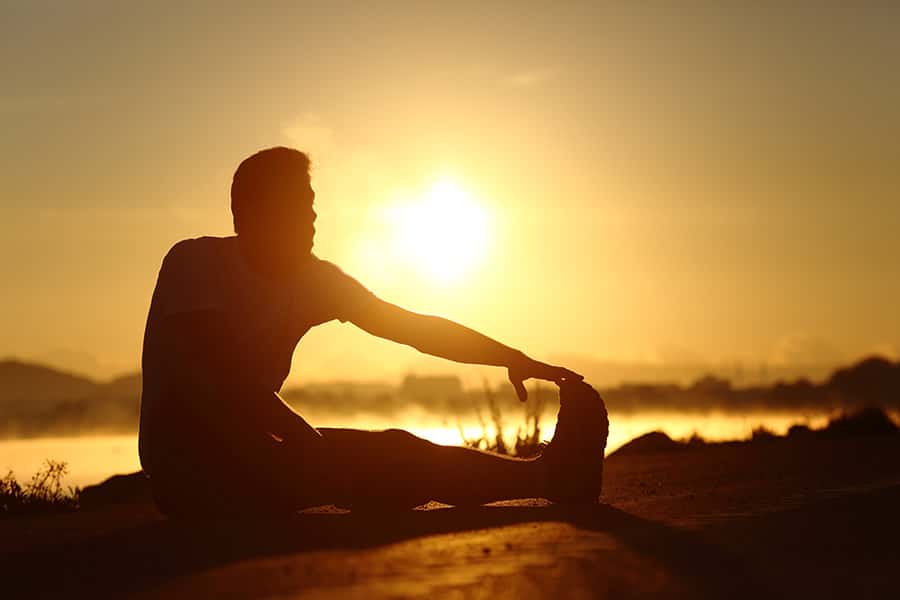Why and How We Live Rhythmically at Two Dreams
The chains of habit are generally too small to be felt until they are too strong to be broken
– Samuel Johnson
Every living organism has a natural rhythm. These rhythms are disrupted by illness, particularly drug and alcohol use. A drug can create false sleep. A drug can stimulate alertness. A drug can suppress appetite. Another can stimulate appetite.
The science behind living rhythmically, strategies that promote and restore natural rhythms, and the role of sleep, nutrition, meditation, and exercise in the 21st century approach to healing oneself in recovery are all important aspects of your journey at Two Dreams.
At Two Dreams the concept of living in the NOW (No Other Way) is central to living a life in recovery. Similarly, mindfulness is a state of active, open, non-judgmental attention on the present. Many treatment programs and practitioners are employing mindfulness in the care and management of patients with mood, anxiety, and substance use disorders- diseases and symptoms which tend to cluster together.
The scientific basis of the effectiveness of mindfulness has been established. Specific activities, such as breathing, and strategies, such as yoga, are commonly employed. At Two Dreams we incorporate these activities and strategies into our treatment settings.
The following explains how these techniques support the restoration of circadian and ultradian rhythms and why this is important to recovery.
What are Circadian and Ultradian Rhythms
Circadian Rhythms are any biological process that displays endogenous, entrainable oscillation around 24 hours. It comes from the two Latin words, Circa- around/ approximately and Diem- day. The wavelength of daylight hits the retina and goes through the Suprachiasmatic nucleus (a tiny region of the hypothalamus responsible for controlling circadian rhythms) to the hypothalamus to the pineal gland where it blocks the release of melatonin. When the release of melatonin is blocked, or turned off, it signals that the brian needs to wake up. We do not recommend melatonin as a sleep aid- it you have been given a big slug of it as a pill the night before it may hang around the brian and block your wake cycle. Sleep hygiene is not just about sleeping- it is about being able to be awake the next morning too.
Ultradian rhythms are ones that occur on less than a 24-hour cycle. The hemispheres of the brain cycle about every 90 to 120 minutes. It is important to give the brian a rest every two hours or productivity is reduced and fatigue sets in.
Because we are so focused as a society on getting sleep an epidemic of sleepiness has set in. sleep loss accumulates and the taking of pills to get to sleep makes it hard to respond to natural light inputs in the morning- further eroding away at our ability to get a good night sleep the next night. As hours of wakefulness accumulate, adenosine accumulates in the cortex and sleepiness should follow. Caffeine blocks the binding of this molecule which signals that we should sleep. If we release the adenosine with caffeine too late in the day when bedtime comes around, we will find it difficult to sleep. Additionally, many people take caffeine in the morning to wake up. Since adenosine is at its lowest point in the day after a good night’s sleep, caffeine is doing nothing to get us going. What is contributing to the sense of being away is the secondary inputs of the esophagus and gut adding to the exposure of the skin and retinas to light (see below). What would make the most sense is to take a small sip of pure, natural water and allow that input to signal the daytime.
Two Dreams’ Tools
The Two Dreams’ Tools for Treatment Improvement, revisited
- Abstinence: understand and practice universal abstinence, avoid Brain repairs and restores when not exposed to drugs. When medication treatment is used (e.g. buprenorphine or methadone, the brain repair is possible due to the on-on response at the receptor, rather than turning on and off throughout the day).
- Medications: for primary Substance Use Disorders (SUD) and co-morbid conditions only as prescribed by a physician knowledgeable in Substance Use Disorder medicine or Substance Use Disorder psychiatry. Often before treatment people have been exposed to too much or too little or not the right medication or medications used as drugs. Some medications are prescribed to protect the brian from exposure to the drug of choice and others are prescribed to blunt the response of the brain to taking the drug of choice (i.e. naltrexone).
- Peer Support: to create cohesion and identification; support the ability to identify, own, and express one’s Provides socialization in recovery and psychological support to take risks.
- Professional Guidance: bond, practice surrender in following the advice of the professional, and gain insight as assisted by the professional. Provide structure and support and an assessment which leads to awareness.
- Exercise: for restoration of biological functions and protection against injury. Certain activity creates input to restore circadian rhythm. For example, when you take your morning beach walk the wavelength of the sunlight signals the brain to switch from sleep to the awake state and the sun on the skin, your body’s largest organ, signals that you are awake. Also, at Two Dreams you will put your joints through their range of motion to alert them that they are being used in your awake state and stretch muscles to prepare them for the work of the day.
- Diet: for restoration of biological functions and protection against hunger, cravings, and use. Certain meals promote restoration of circadian and ultradian rhythms. For example, a small amount of food in the stomach signals the brain that you are awake and breaks the fast. The small meal at Two Dreams is a fruit-based smoothie (4-6 ounces) and it provides you the energy you need for the morning brisk walk to the beach (see exercise).
- Ritual: wide range of activities and schedule to support change and normalize Circadian and Ultradian rhythms. Ritualized activities reinforce the wake-sleep cycle and restores normal functioning of your circadian and ultradian rhythms. At Two Dreams you will explore yoga, meditation, use of sauna along with sleep hygiene, and other pain protective activities.
ASAM Definition of Substance Use Disorder
Substance Use Disorder is a primary, chronic disease of brain reward, motivation, memory and related circuitry. Dysfunction in these circuits leads to characteristic biological, psychological, social and spiritual manifestations. This is reflected in an individual pathologically pursuing reward and/or relief by substance use and other behaviors.
Substance Use Disorder is characterized by inability to consistently abstain, impairment in behavioral control, craving, diminished recognition of significant problems with one’s behaviors and interpersonal relationships, and a dysfunctional emotional response. Like other chronic diseases, Substance Use Disorder often involves cycles of relapse and remission. Without treatment or engagement in recovery activities, Substance Use Disorder is progressive and can result in disability or premature death.
Translation: The neurotransmitter dopamine release feels good and changes the brain. Because it feels good the things we do to get it released are repeated. While dopamine creates changes in many areas of the brain, change in certain areas are common to all types of substance use, leading to disorders. In the end, changes in function that support drug use are more powerful than the drive to do almost anything else.
Like other chronic diseases, Substance Use Disorder often involves cycles of relapse and remission, but relapse is NOT necessary, and one should consider use after treatment a relapse, if and ONLY if because of treatment, these conditions met:
- You acknowledge Substance Use Disorder- “I know I have the disease of SUD,†and
- You commit to recovery- “I feel that the things I am being told to do because of treatment are absolutely the things I should do to support my recovery,†and
- You reduce, or eliminate inducements to use- “These people, places, and things in my life are only going to lead me back to drug or alcohol use so I must change them to or continue to get support and supervision around handling them since I cannot do it alone.â€
The question of your motivation will always come up but what we know from 40 years of research is that treatment need not be voluntary to work, and sanctions and enticements have power to increase entry and retention. We also know that no matter the reason for entering treatment there are going to be similar outcomes if treatment is competent, and you stay long enough to learn new skills and apply them to the problems of SUD.
Finally, without treatment or engagement in recovery activities, Substance Use Disorder is progressive and can result in disability or premature death.
Why Rhythms?
The world is full of rhythm (sun rises, plants open and close and turn to the sun, tides rise and fall). Also, life is full of rhythm (we hunger, we thirst, we rest, we tire). In the early days of life before we could manipulate the light, we depended upon rhythm.
Pre-manipulation the we woke with the sunrise and slept with the sunset. Living and working in the light gave humans a survival advantage. When we were able to use electricity to light our lives we extended our work days, used refrigeration to store food and we work 24-hour cycles. Because of refrigeration, we can eat when hungry, and sometimes when not hungry. Our movement away from circadian rhythms is associated with disrupted sleep cycles and obesity.
Rhythms are daily, tidal, weekly, seasonal, and annual. Inputs to living with circadian rhythm are light, temperature, and hormones. Multiple inputs can amplify our response to the inputs. For example, in the brain our primary input is light. Secondary inputs that communicate that we are awake during the day is from food going down the esophagus, deep breathing in response to exercise and movement, and the light on our skin. There are other more complicated inputs from the liver, pancreas, spleen, thymus, and the brain itself.
When our brain is subjected to disruptive inputs of:
- Light such as that which comes from jet lag and fatigue, disorientation, and insomnia),
- bipolar disease that is unchecked by medicine such that we see irregular function of circadian rhythm and energy when it is not needed or warranted, and periods of depression associated with low energy,
- melatonin suppression by blue lights, emitted from our electronics, which is needed to signal the need to sleep (the wavelength of blue light is more powerful as a stimulant than white light, which is more powerful than orange/yellow light), and
- medications and drugs. The most common reason for seeking a visit with a psychiatrist today is to get a sleep aid which disrupts our ability to use normal inputs and changes the rhythm of sleep. At Two Dreams you will learn that fatigue is the friend of sleep and medication, including melatonin, is the enemy.
Restoration of circadian and ultradian rhythms protects against relapse. The body desperately seeks hemostasis and will respond to adding rhythmic communication to your life. At Two Dreams we first seek synchrony of day and night; you may very well know how your days and nights are upset by using at night and staying up late to use or recover from the use, then needing to take a sedative, alcohol included, to come down and go to sleep. The first thing we do at Two Dreams is to get you in bed at night and into the sunlight in the morning. We feed you in a manner to send secondary inputs to the brain to support your awake time and help to maintain consistent blood levels to give you the energy to meet the demands of the day. Afternoon naps are encouraged as needed to allow you to normalize your wake-sleep cycle. This alone gives you an edge in recovery.
We also monitor your Hungry-Angry-Lonely-Tired (HALT) scale to make sure you are aware of the role that sleep, food, human contact and support play in allowing you to bring your best to treatment. All issues that are out of synchrony after the first week of treatment will get additional attention, including your sleep ritual.
Your awakening is supported by facing the sun (sun salute), walking in the sun, and morning movement and feeding. When non-rhythmic you are more likely to be sleepy during the day, moody, and even constipated.
Circadian rhythms also effect mood. One person of every eight (8) to ten (10) people are expected to experience a mood disorder in their lifetime. Serotonin, a neurotransmitter is considered the happiness hormone so functional deficits in it are associated with mood disorders. Additionally, it is a precursor (building block) of melatonin at night- no wonder mood disorders are associated with sleep disorders. Anything you can do to keep this system in balance is a benefit. But, DO NOT think that mood disorders can solely be treated by sleep and sunlight- if you have a problem with mood and sleep see an addicitonist or a psychiatrist who specializes in addiction. The reason Two Dreams emphasizes one who specializes in addiction is, so you don’t get exposed to medications that might make your problems worse by prescribing the wrong medication.
At Two Dreams we are not the only ones aware of and trying to use the circadian rhythms to improve your health. The Cosmetic industry has long recognized the phytonutrients that improve and repair skin and promote regeneration are absorbed at certain times better than at others. Day products are lighter, add moisture and provide sun protection. Night products are filled with nourishment, active ingredients, have a higher fat content and support regeneration.
Inflammatory stress in organ systems occurs over years and may be subclinical, inconspicuous and beneath the pain threshold. But, inflammation in organs can lead to damage over time and is associated with precancerous cells. Manufactured oils promote inflammation and are present in food that is processed in 10-20 times what would be normal dietary amounts. Consequently, we like to eat food that is not out of a “bottle, can, or bag†at Two Dreams to reduce your exposure to these oils. The negative effect of these oils can be balanced or reduced by “good†dietary oils like those found in fatty fish, avocados, etc.
Hormones in the body act to turn on systems (cortisol is highest in the morning) or slow or stop functions (melatonin). The slowing of systems gives it time to regenerate.
Humans also suffer from a condition often referred to as “Burnout.†It is defined as a chronic physical and emotional state of exhaustion, where you are overextended and unfit for daily tasks. Women are more often subject to burnout than are men and its signs and symptoms include hopelessness, inner emptiness, sleep disturbances, lack of energy, forgetfulness, decreased libido, difficulty concentrating, and s negative outlook on life
A reminder about the morning
Light through the SCN shifts the brain from the neurotransmitter GABA (the breaks) to Glutamate (the gas). Light turns off melatonin and food in the esophagus and stomach stimulates the bowel in the morning and reinforces awake cycle. Food in the stomach stimulates a reflex called the gastro-colic reflex, which is a signal to empty your bowles. It is important to not suppress this reflex and take time to respond to it by going to the bathroom and allowing it to work and reinforcing it. Additionally, stimulation of the retina by light and movement by taking a quick walk in nature will nurture the awake cycle. To get the most of your energy used to nurture and reinforce circadian rhythms, block blue light or use dim red lights at night; take small, frequent feedings promote digestion and provide a steady blood sugar; and pay attention to stimulation and movement. This means keep a regular bed time, do a morning sun salutation, avoid caffeine and sugar after 2 PM, and exercise regularly with a focus on ischemic producing yoga moves increase blood flow.
Circadian rhythm times of the day
Here are the times that are associated with circadian rhythm so that you can plan your day
- 6 AM: Awaken
- 7-9 AM: Hormones peak
- 8-9 AM: Highest pain tolerance
EXERCISE - 10 AM – Noon: Fully fit and wide awake, brain efficient
DO TAXING BRIAN WORK - 12 Noon: Time to eat, digestion in top form
EAT YOUR BIGGEST MEAL - 1-2 PM: Nap
SLOW DOWN - 3-4 PM: Upswing, learning, LT memory
MEMORIZE THINGS NOW - 5-6 PM: Second peak, manual labor
EXERCISE AND MOVE - 6-9 PM: Regenerate, relax, smell and taste
LET YOUR BODY RECOVER FROM THE DAY, BE WITH PEOPLE. STOP THE BLUE LIGHT EXPOSURE - 9 PM: Stomach rests
DO NOT PUT FOOD IN YOUR STOMACH AFTER 9 PM - 11 PM: Bedtime
GET SUPINE AFTER SLEEP HYGIENE - 11 PM – 1 AM: Creativity peak
SUBCONSCIOUS WORKING THROUGH THE DAY - 1 AM: Dreaming
- 2 AM: Regenerate, except liver and skin
- 3 AM: Intensive sleep
- 4 AM: Lungs active
- 5 AM: Kidney function lowest
What do you want to get from Two Dreams Treatment?
- Mental peace
- Physical well being
- Personal productivity
Resources
- http://www.uchospitals.edu/news/1999/19990816-kleitman.html
- https://www.polyphasicsociety.com/polyphasic-sleep/science/rhythms/
- http://www.ncbi.nlm.nih.gov/pubmed/27261553
- http://www.ncbi.nlm.nih.gov/pubmed/27286932
- http://www.ncbi.nlm.nih.gov/pubmed/27271308
- http://www.ncbi.nlm.nih.gov/pubmed/27286932
- http://www.ncbi.nlm.nih.gov/pubmed/27199894
- http://www.ncbi.nlm.nih.gov/pubmed/27235338
- http://www.ncbi.nlm.nih.gov/pubmed/27231897
- http://www.ncbi.nlm.nih.gov/pubmed/27226468
- https://www.chronobiology.com/health-benefits-of-chronopharmacology/brain-and-psyche/
- http://www.health.harvard.edu/staying-healthy/blue-light-has-a-dark-side




